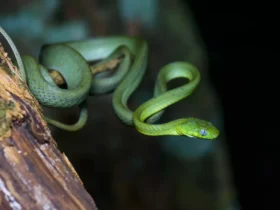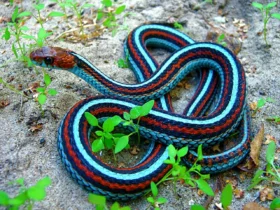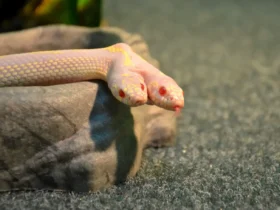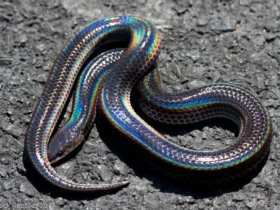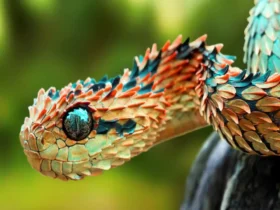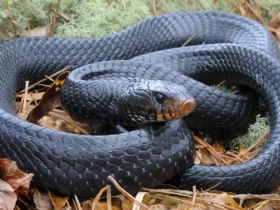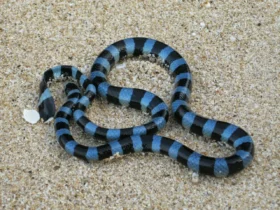The Gaboon Viper (Bitis gabonica) is a mesmerizing and highly venomous snake found in the rainforests and savannas of sub-Saharan Africa. With its impressive size, intricate patterns, and potent venom, the Gaboon Viper has earned a fearsome reputation. In this article, we delve into the captivating world of the Gaboon Viper, exploring its unique features, hunting techniques, and remarkable adaptations that make it a truly extraordinary predator.
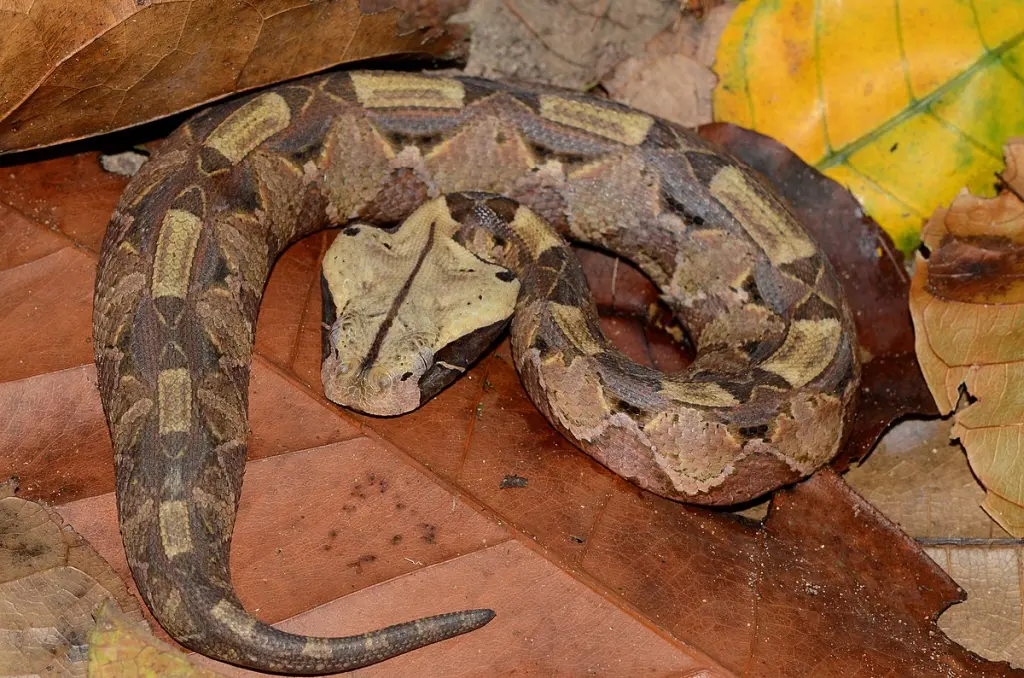
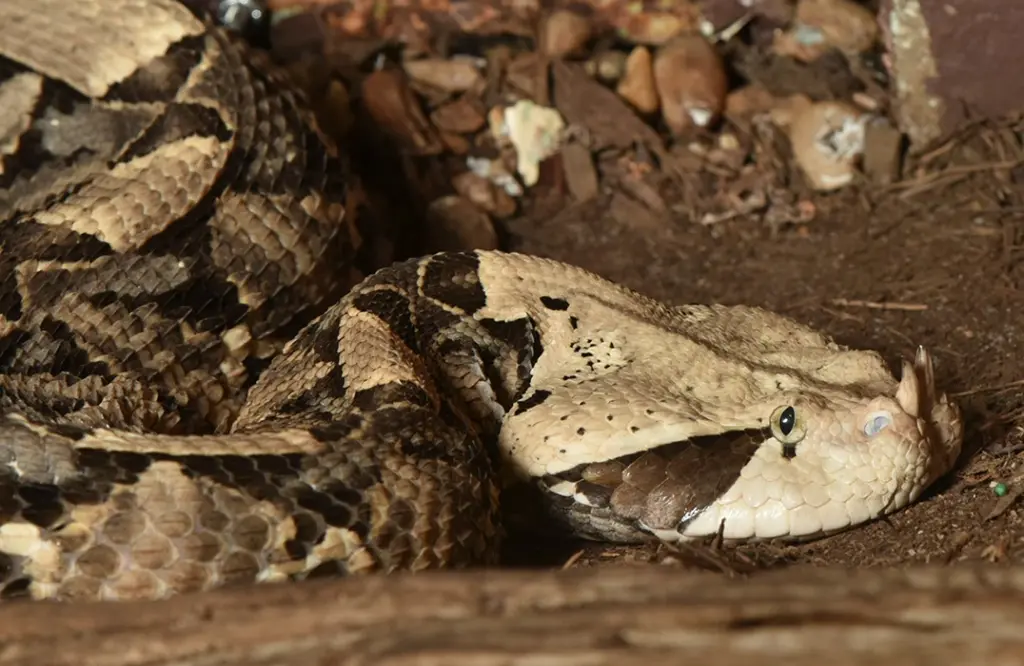
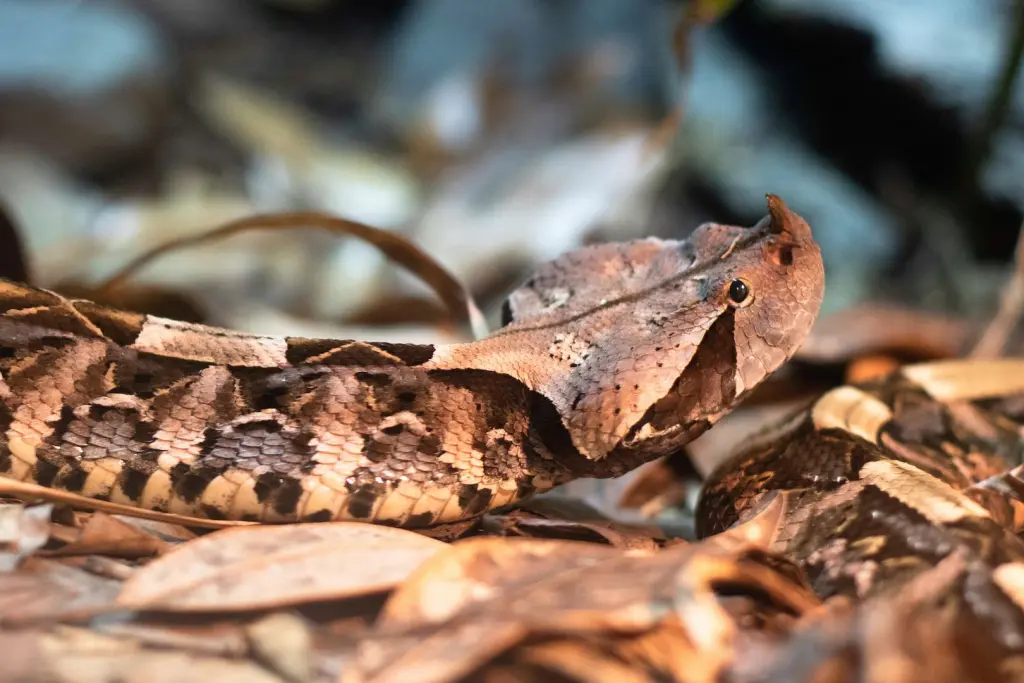
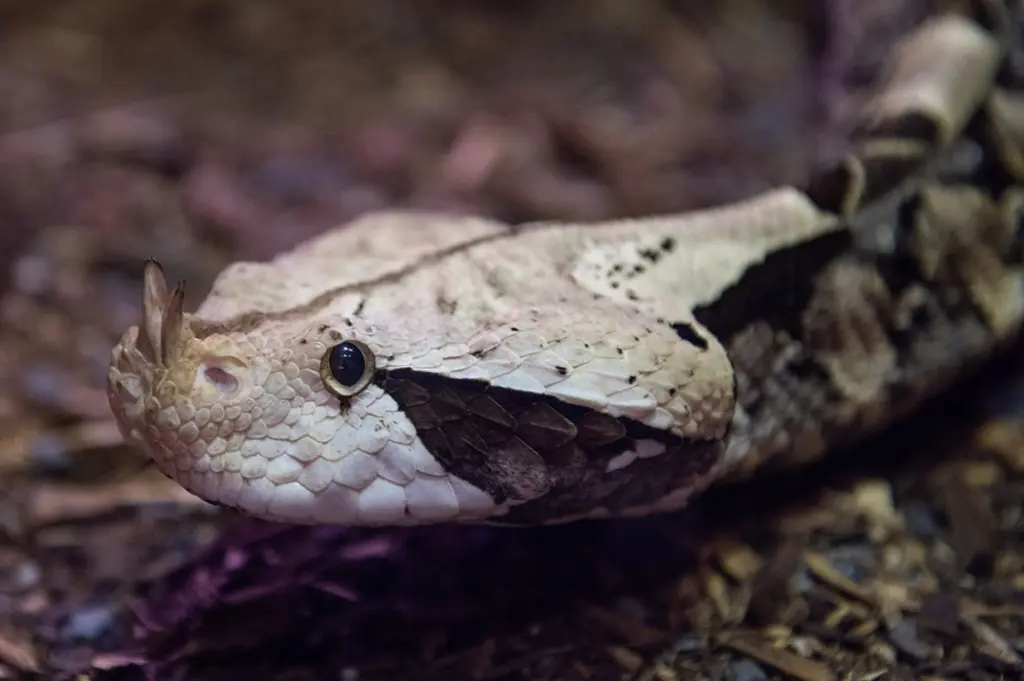
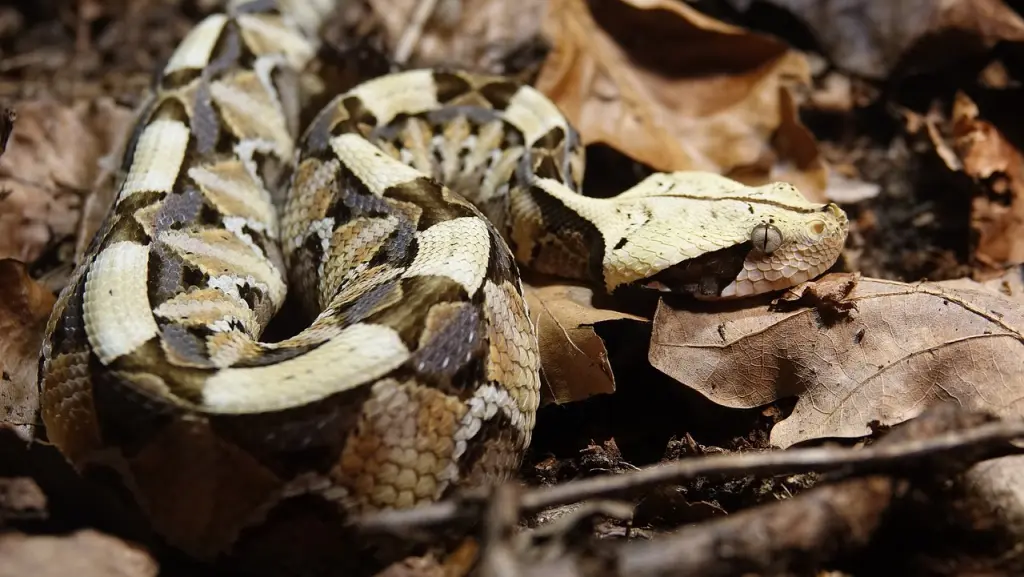
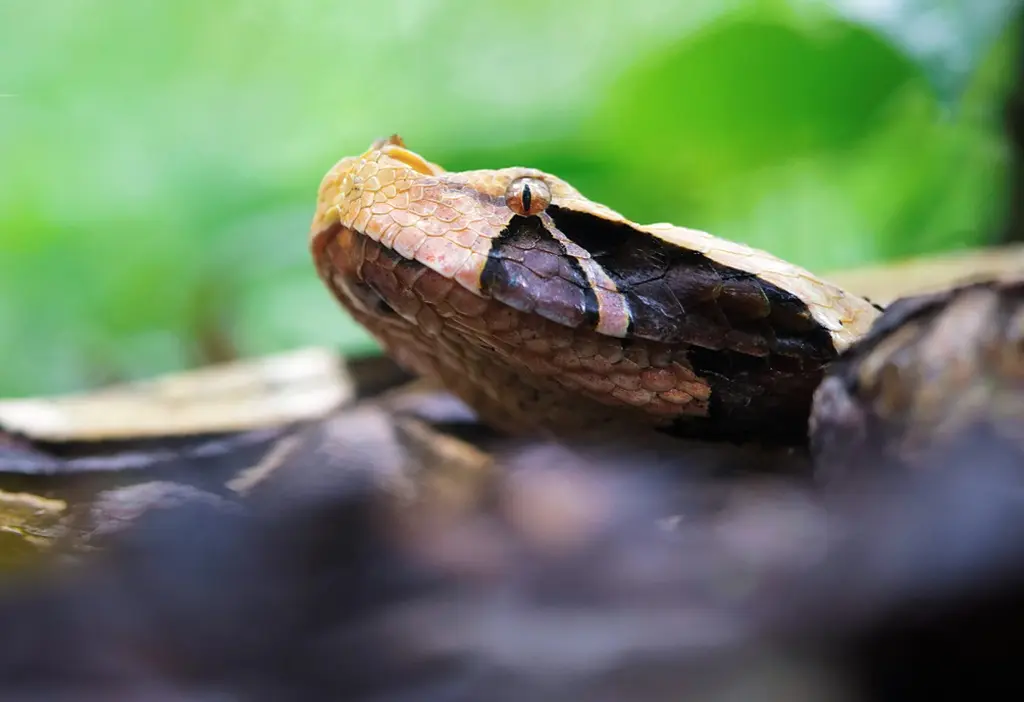
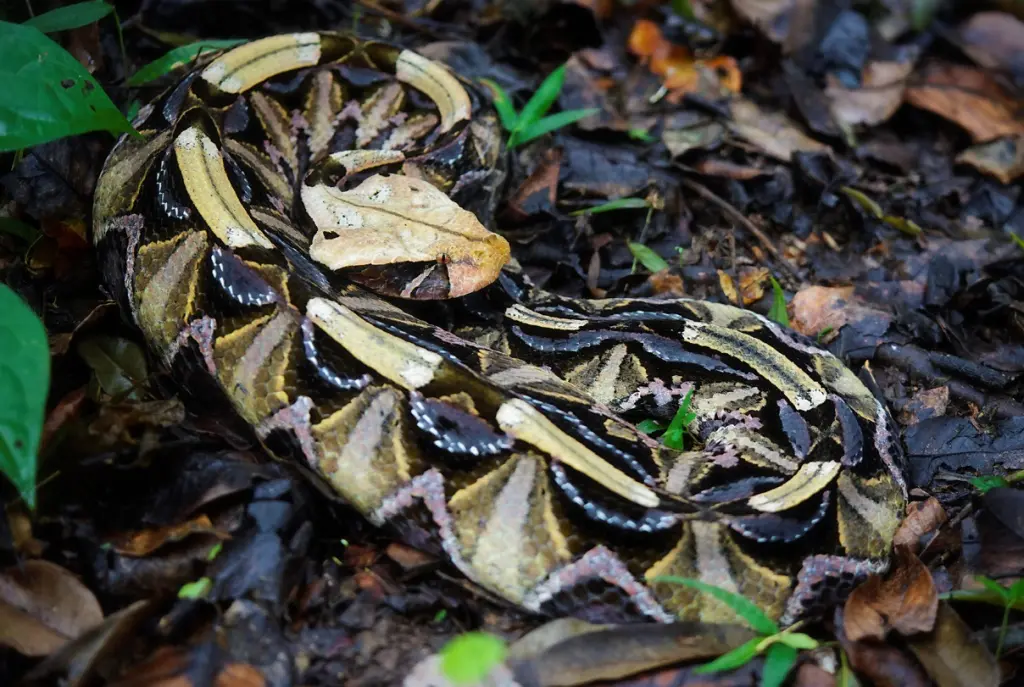
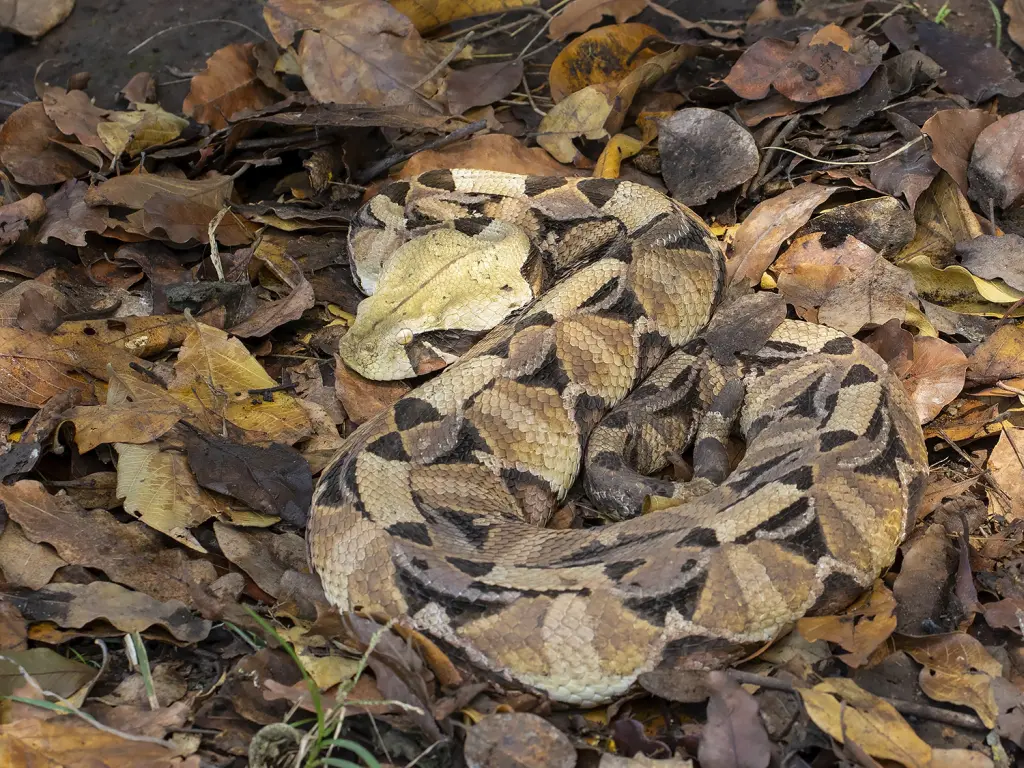
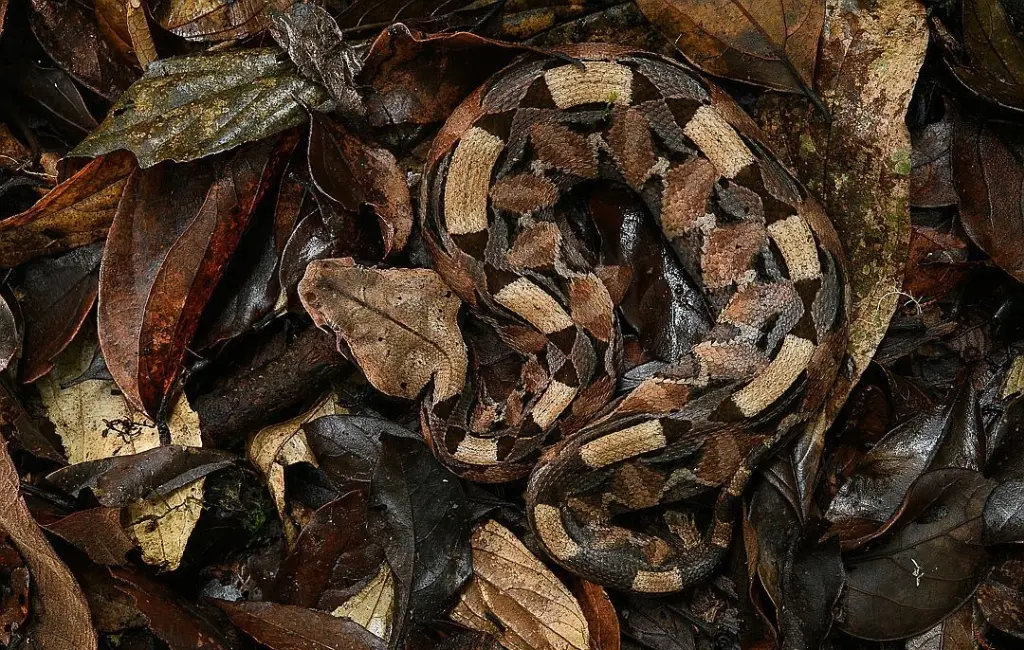
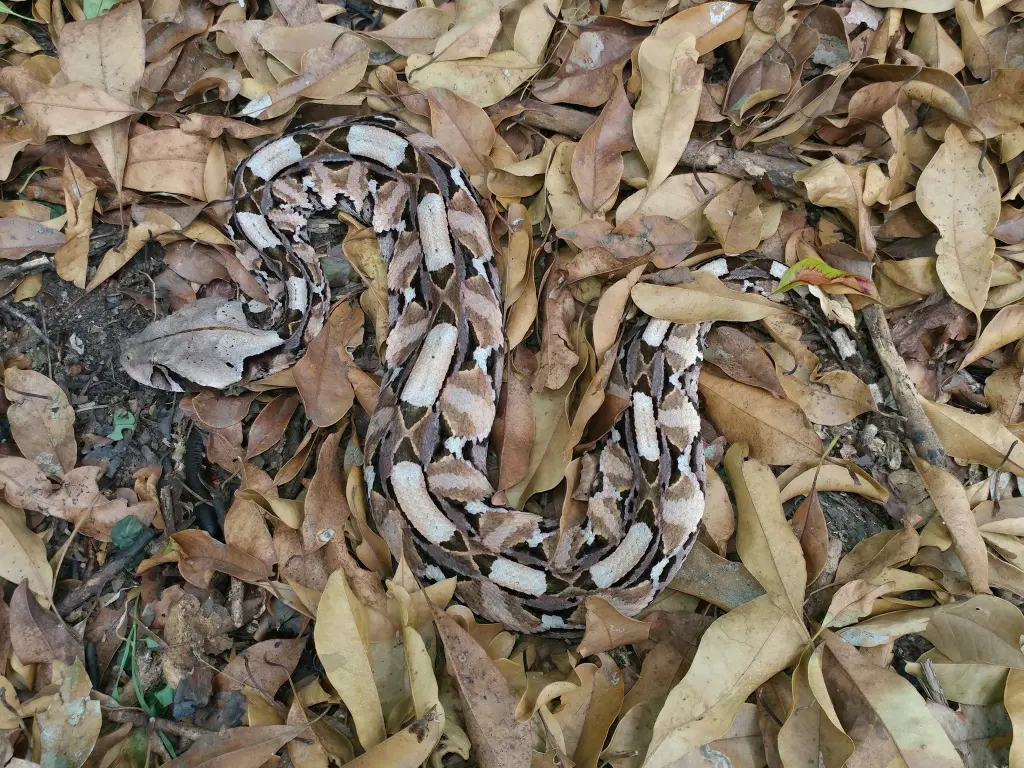
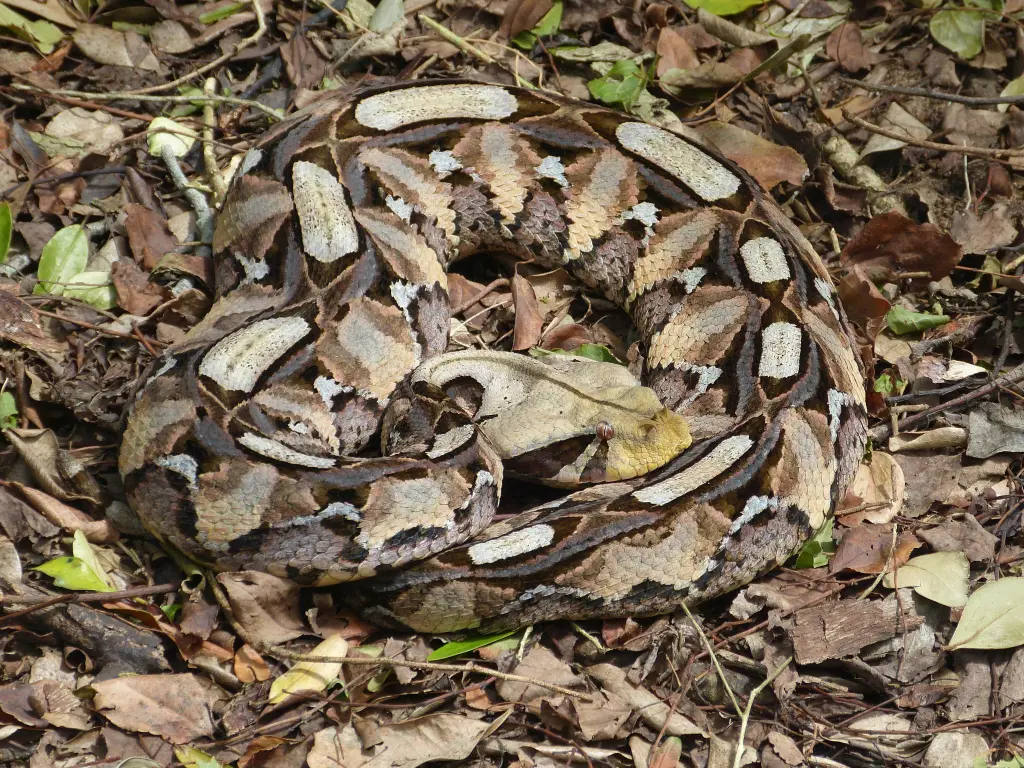
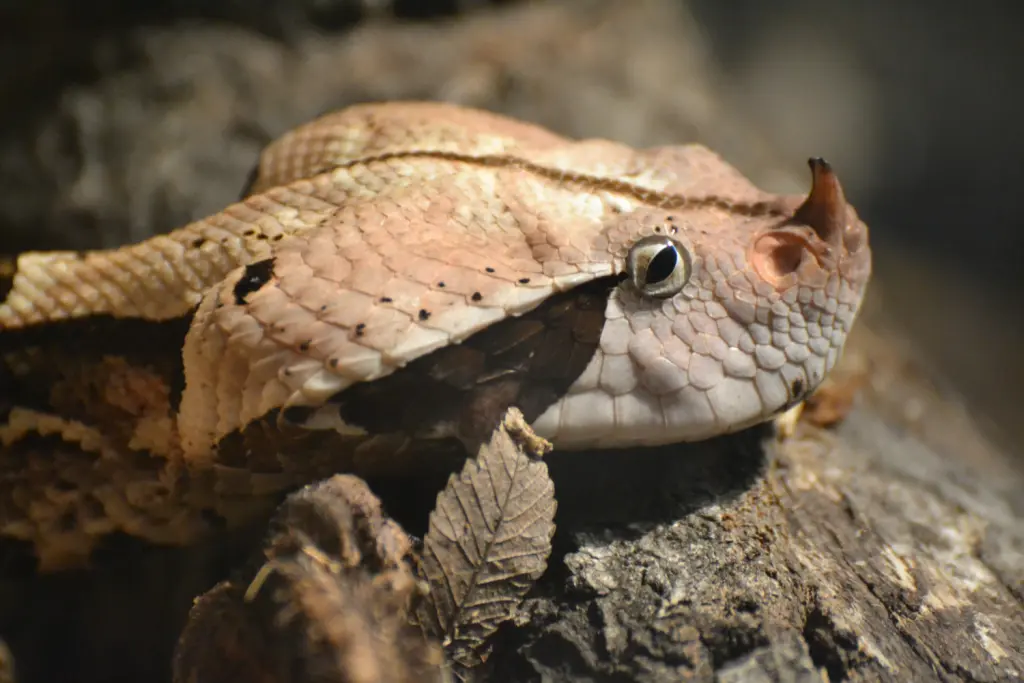
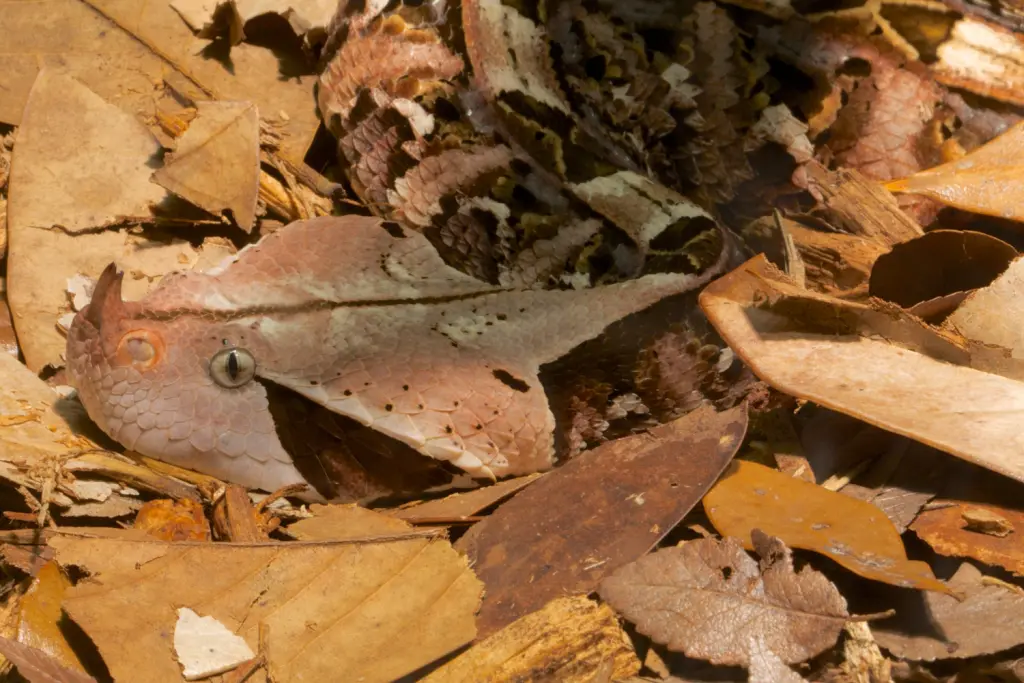
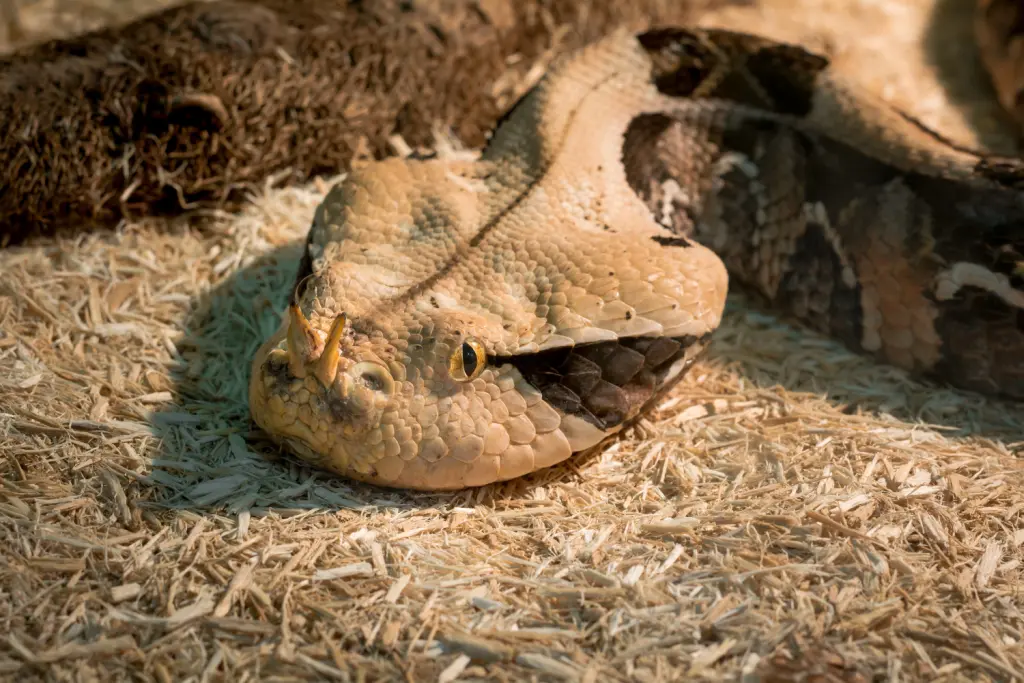
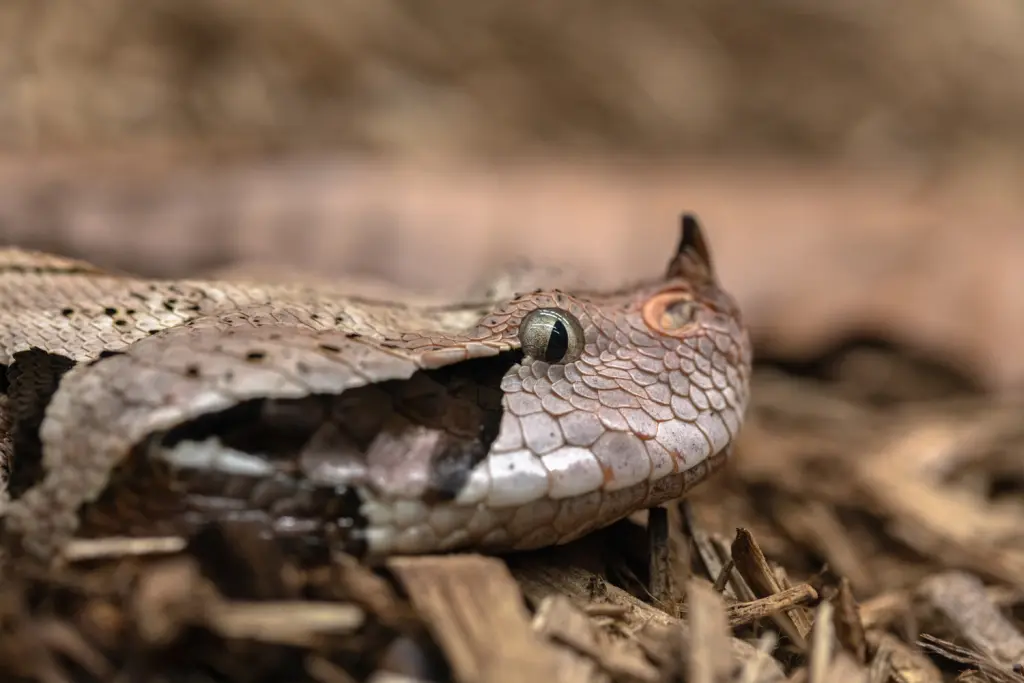
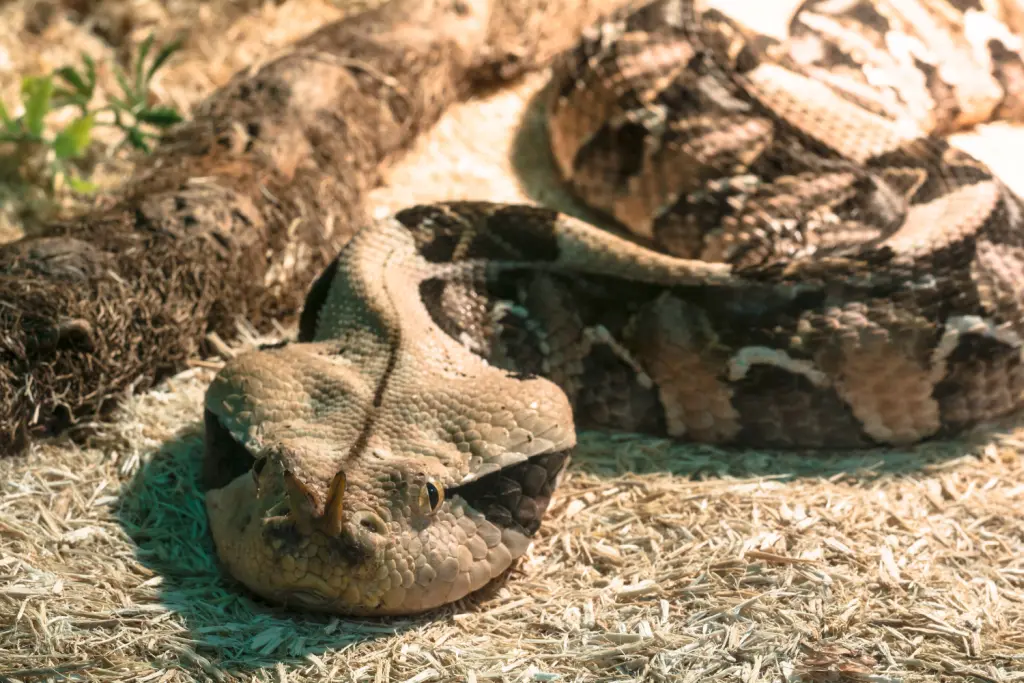
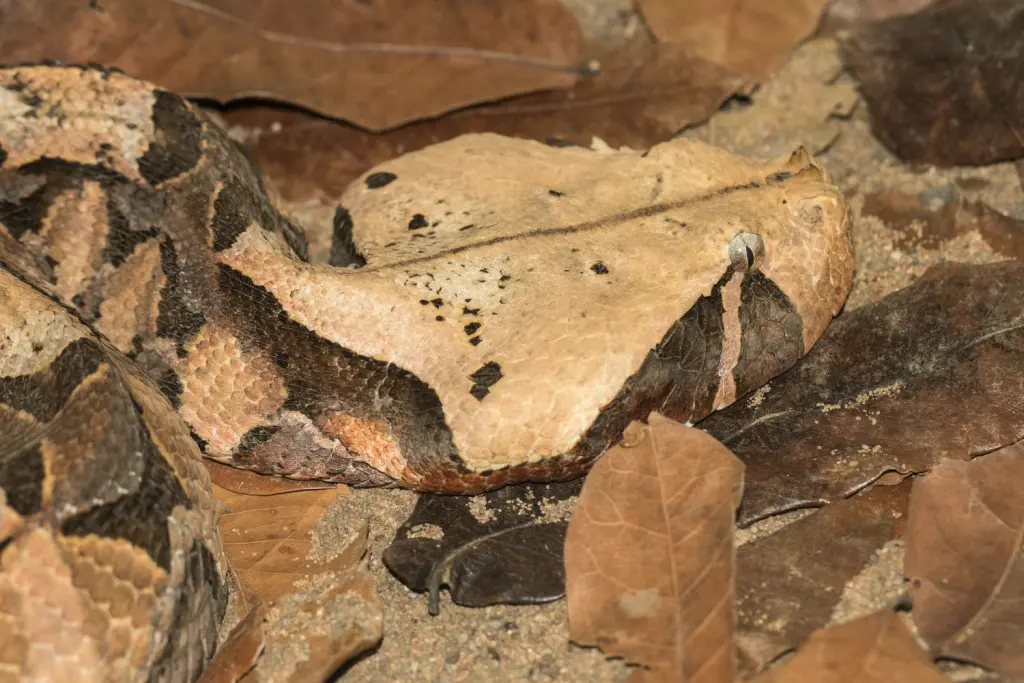
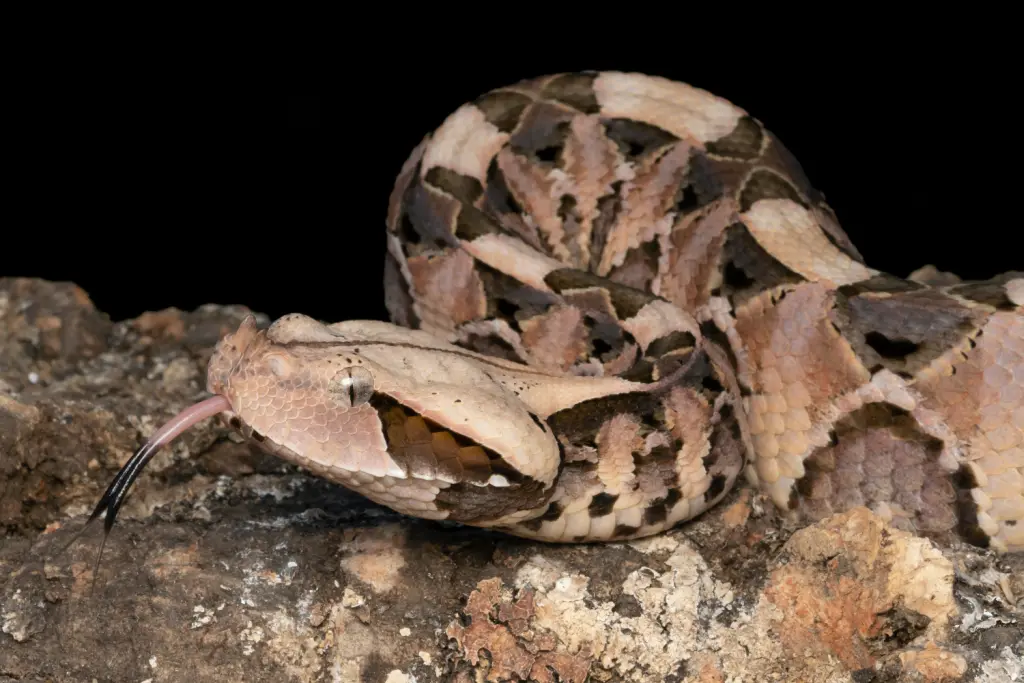
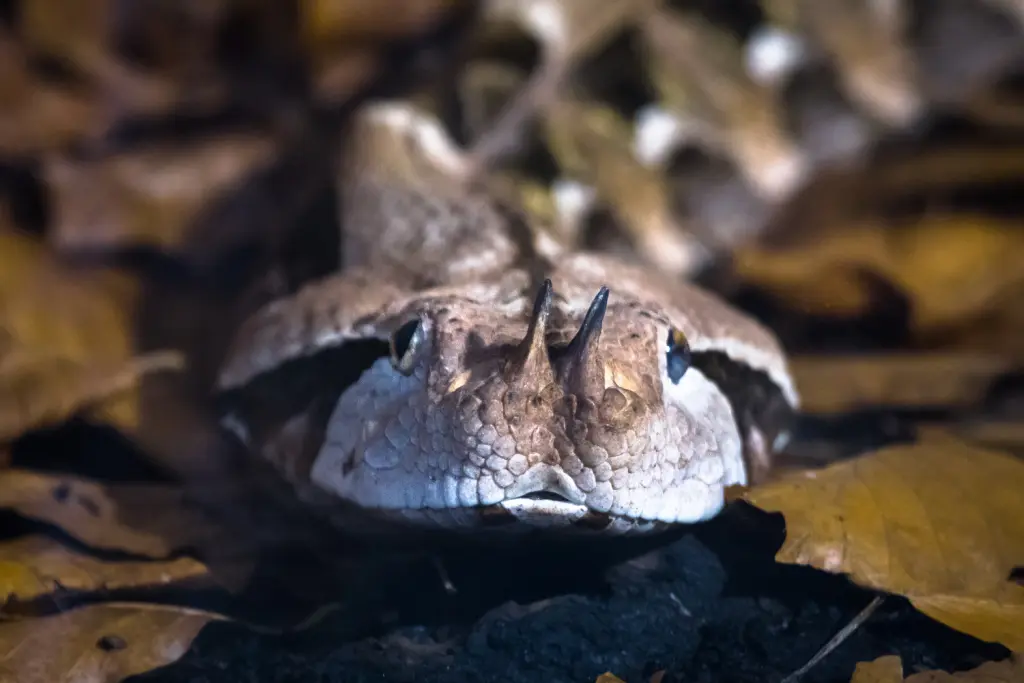
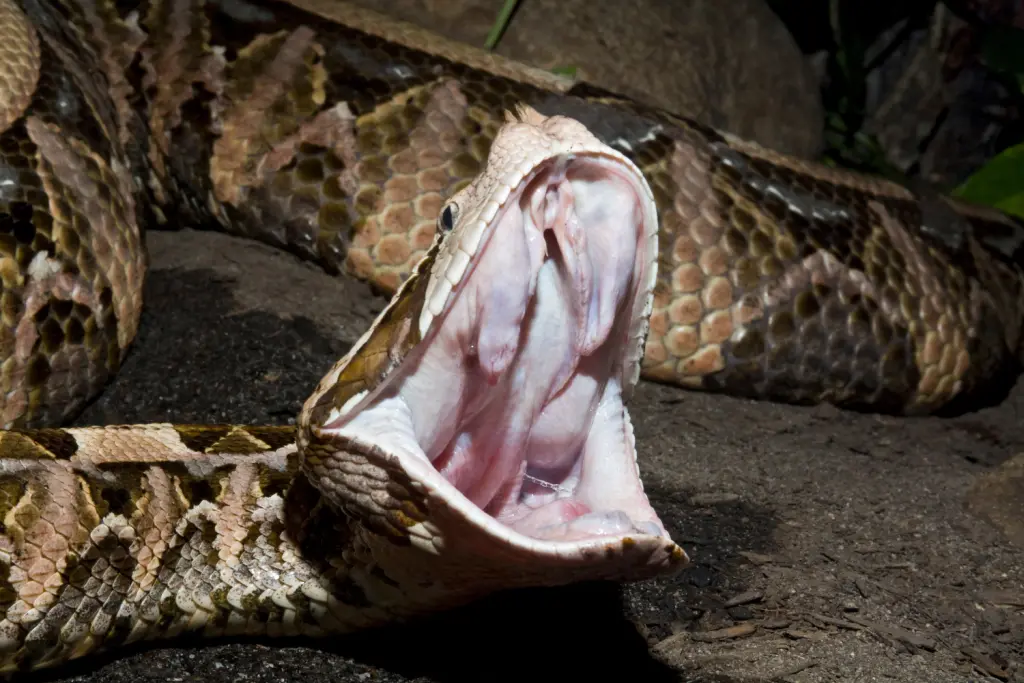
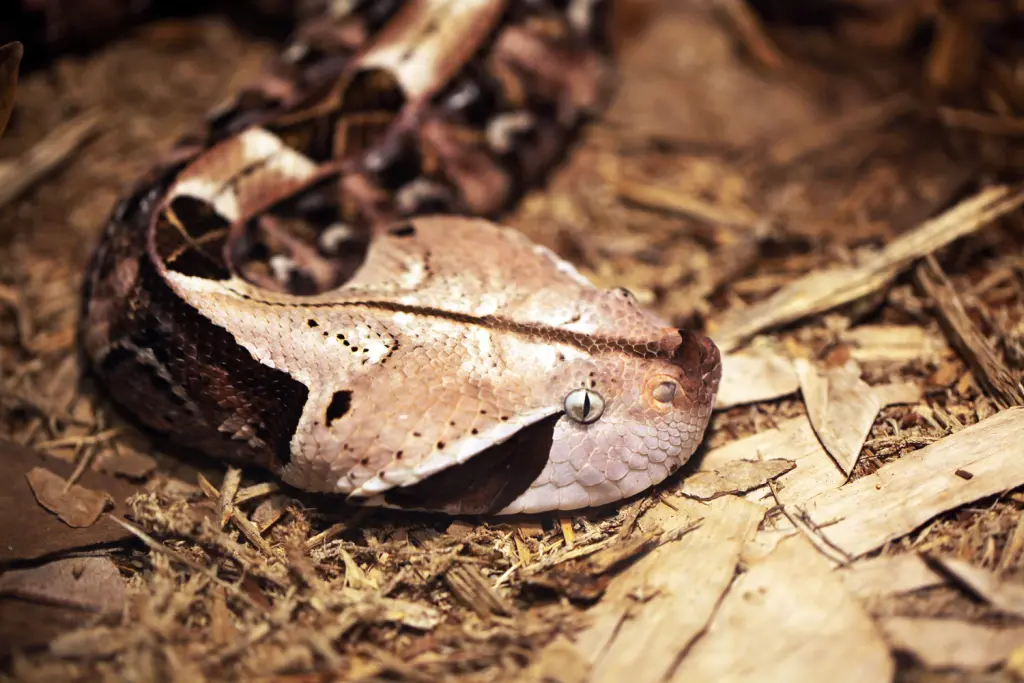
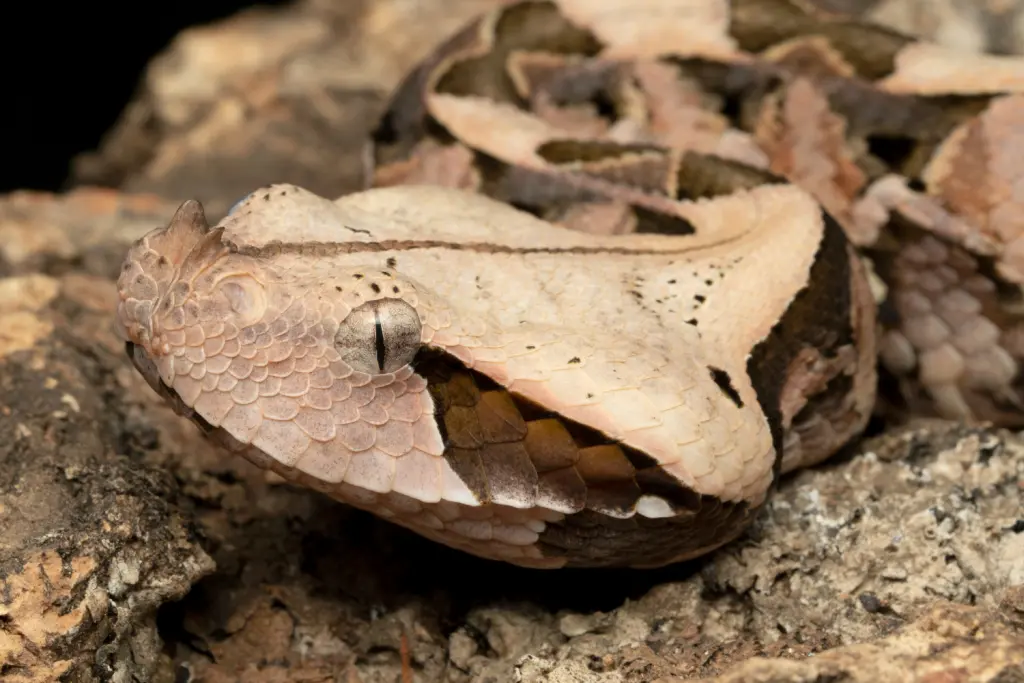
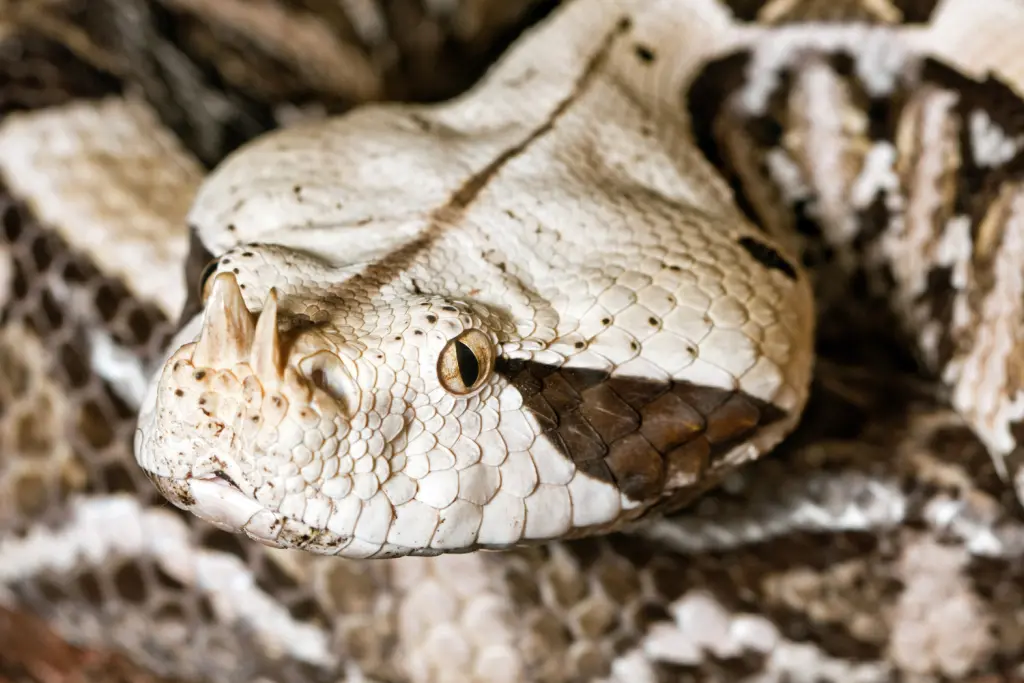
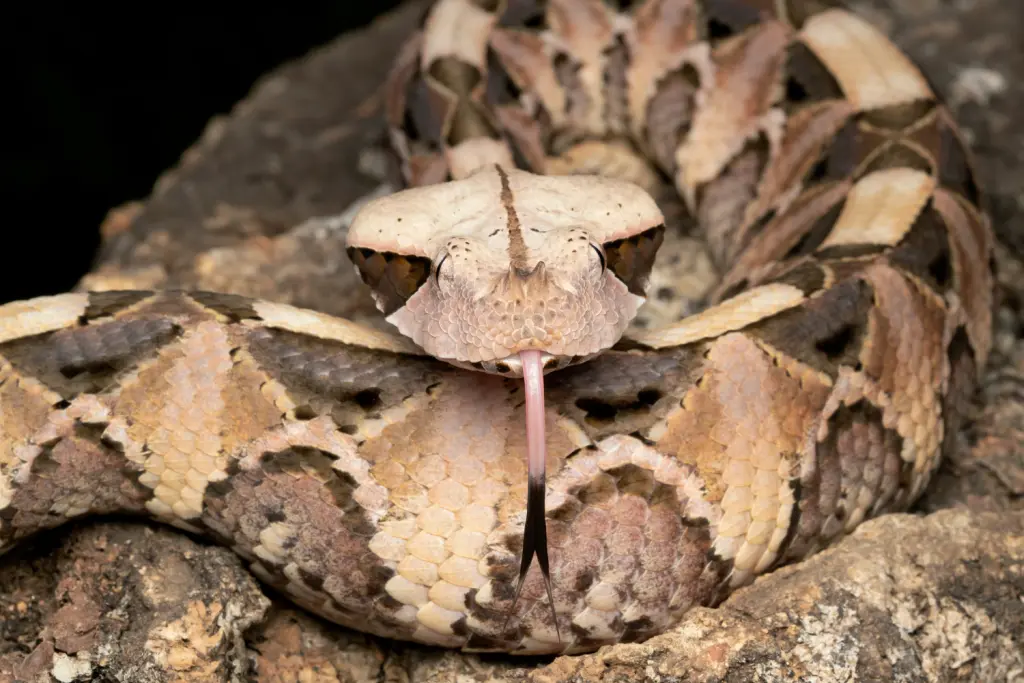
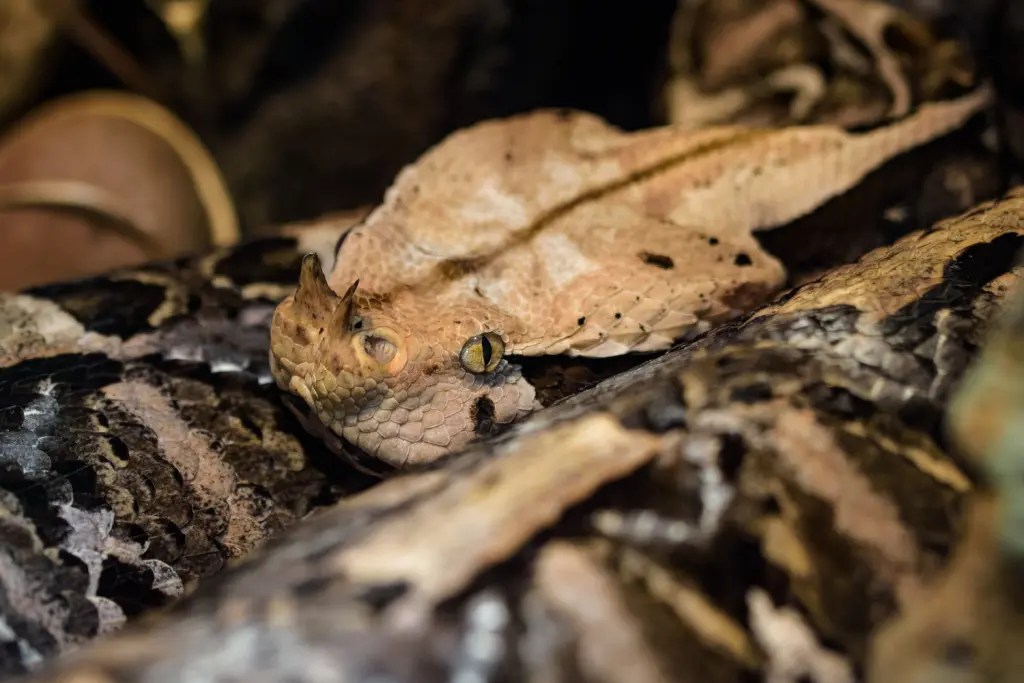
Appearance and Camouflage
One of the most striking features of the Gaboon Viper is its intricate and cryptic coloration. Its large, broad head is adorned with a series of irregular, geometrically patterned scales, resembling the leaf litter and shadows found in its natural habitat. This intricate camouflage serves as an effective disguise, allowing the viper to blend seamlessly into its surroundings, making it nearly invisible to both prey and potential predators.
Venom and Fangs
Equipped with the longest fangs of any venomous snake, the Gaboon Viper possesses a potent weapon to immobilize its prey. When threatened or hunting, the Gaboon Viper strikes with incredible speed and precision, injecting its venom deep into the unfortunate victim. The venom is a complex cocktail of toxins that disrupts the blood clotting process and damages tissues, leading to severe pain, swelling, and potential organ failure.
Hunting Techniques
The Gaboon Viper is an ambush predator par excellence. Utilizing its extraordinary camouflage and remaining motionless for hours on end, it patiently waits for unsuspecting prey to wander within striking distance. Its preferred targets include small mammals, such as rodents, birds, and even other snakes. When the opportunity arises, the Gaboon Viper delivers a lightning-fast strike, seizing its prey with its impressive fangs and injecting a lethal dose of venom.
Incredible Adaptations
Apart from its incredible camouflage and venomous arsenal, the Gaboon Viper possesses other adaptations that contribute to its success as a predator. One such adaptation is its heat-sensing pits, located on either side of its head. These specialized organs allow the snake to detect minute differences in temperature, enabling it to accurately strike at warm-blooded prey, even in complete darkness.
Reproduction and Life Cycle
The Gaboon Viper follows a viviparous mode of reproduction, giving birth to live young rather than laying eggs. After a gestation period of several months, the female Gaboon Viper gives birth to a brood of between 20 and 60 fully formed neonates. These miniature vipers are independent from birth and equipped with venom and fangs, ready to fend for themselves in the unforgiving world of the rainforest.
Interactions with Humans
Although the Gaboon Viper possesses a fearsome reputation, it generally prefers to retreat rather than engage in conflict with humans. Bites on humans are relatively rare and often occur as a result of accidental encounters or deliberate handling. Nonetheless, it is important to exercise caution and respect when venturing into Gaboon Viper habitats, as their venom can have devastating effects if not promptly treated.
Final Thought
The Gaboon Viper is a remarkable creature that has evolved to become a true master of camouflage and precision strikes. Its intricate patterns and cryptic coloration allow it to blend seamlessly into its environment, while its potent venom and elongated fangs make it a formidable predator. As we continue to explore and appreciate the wonders of the natural world, the Gaboon Viper serves as a reminder of the astonishing adaptations and diversity that exist within the animal kingdom.

